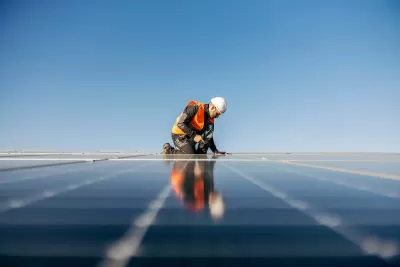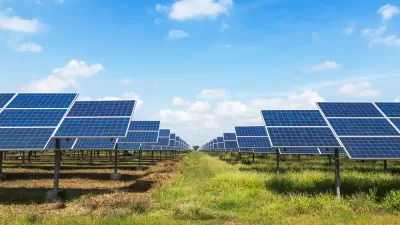The sixth-largest self-storage company in the United States will add solar panels to 8.5 million square feet of its facilities’ rooftops to produce community solar power.

Self-storage powerhouse National Storage Affiliates Trust, in partnership with community solar developer Solar Landscape, is set to add solar panels to 8.5 million square feet of its rooftop space, according to an article from Electrek. “That’s enough solar panels to cover roughly 1,000 of NSA’s self-storage properties scattered across 42 states and Puerto Rico,” and is equal to 100 megawatts of solar capacity to power not just NSA facilities but also nearby homes and businesses. And thanks to the community solar model, the energy will be discounted, reports Michelle Lewis. “This setup means energy gets produced right where it’s needed, reducing strain on the grid and cutting down on energy costs for locals.”
As part of the partnership, NSA will lease Solar Landscape its rooftop space, while Solar Landscape will develop, own, and operate the solar systems. According to the article, the first sites are already under development. In another Electrek article from last year, Lewis reported that industrial rooftops are prime candidates for solar panel space; the U.S. has more than 450,000 warehouses and distribution centers offering up more than 16.4 billion of roof area. “[T]he rooftops of US warehouses built before 2019 alone have the potential to generate 185.6 terawatt-hours (TWh) of solar electricity annually – enough to power 19.4 million average households. That’s equivalent to roughly the entire New York-Newark-Jersey City metropolitan area,” according to the 2023 article.
Given concerns about solar farms taking valuable farmland out of production, turning to large-footprint industrial rooftops to host panels could certainly be a promising alternative.
FULL STORY: 8.5M square feet of US self-storage rooftops are getting solar

Study: Maui’s Plan to Convert Vacation Rentals to Long-Term Housing Could Cause Nearly $1 Billion Economic Loss
The plan would reduce visitor accommodation by 25,% resulting in 1,900 jobs lost.

North Texas Transit Leaders Tout Benefits of TOD for Growing Region
At a summit focused on transit-oriented development, policymakers discussed how North Texas’ expanded light rail system can serve as a tool for economic growth.

Using Old Oil and Gas Wells for Green Energy Storage
Penn State researchers have found that repurposing abandoned oil and gas wells for geothermal-assisted compressed-air energy storage can boost efficiency, reduce environmental risks, and support clean energy and job transitions.

Private Donations Propel Early Restoration of Palisades Playground
Los Angeles has secured over $1.3 million in private funding to restore the Pacific Palisades playground months ahead of schedule, creating a modern, accessible space that supports community healing after recent wildfires.

From Blight to Benefit: Early Results From California’s Equitable Cleanup Program
The Equitable Community Revitalization Grant (ECRG) program is reshaping brownfield redevelopment by prioritizing projects in low-income and environmental justice communities, emphasizing equity, transparency, and community benefits.

Planting Relief: Tackling Las Vegas Heat One Tree at a Time
Nevada Plants, a Las Vegas-based nonprofit, is combating the city’s extreme urban heat by giving away trees to residents in underserved neighborhoods, promoting shade, sustainability, and community health.
Urban Design for Planners 1: Software Tools
This six-course series explores essential urban design concepts using open source software and equips planners with the tools they need to participate fully in the urban design process.
Planning for Universal Design
Learn the tools for implementing Universal Design in planning regulations.
Ascent Environmental
Borough of Carlisle
Institute for Housing and Urban Development Studies (IHS)
City of Grandview
Harvard GSD Executive Education
Toledo-Lucas County Plan Commissions
Salt Lake City
NYU Wagner Graduate School of Public Service





























